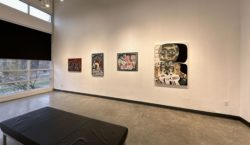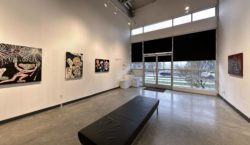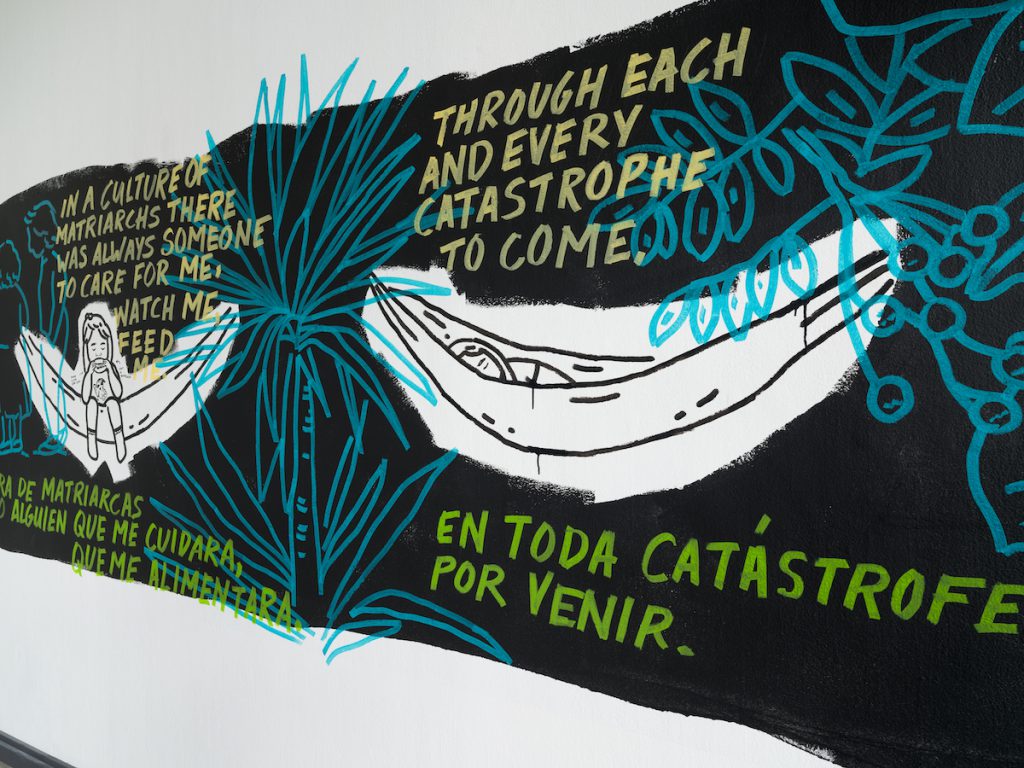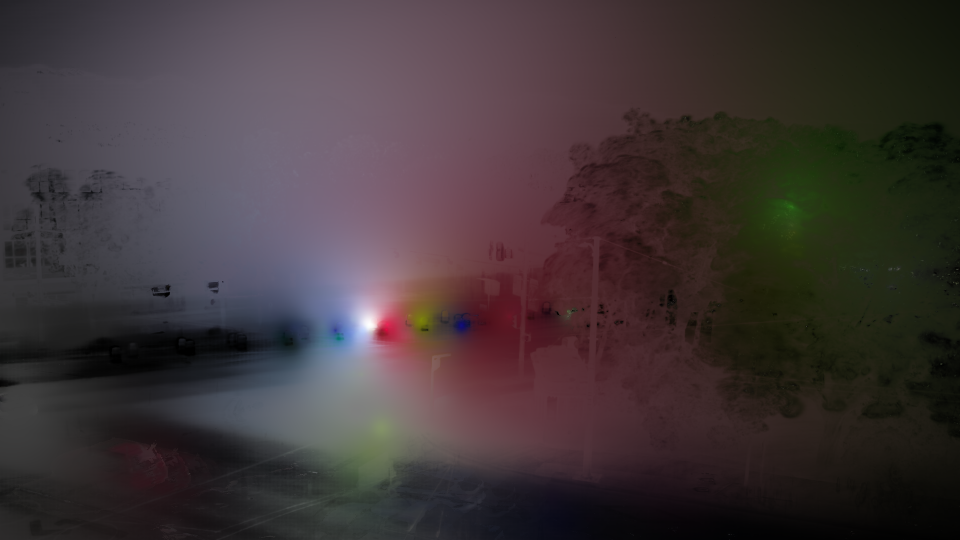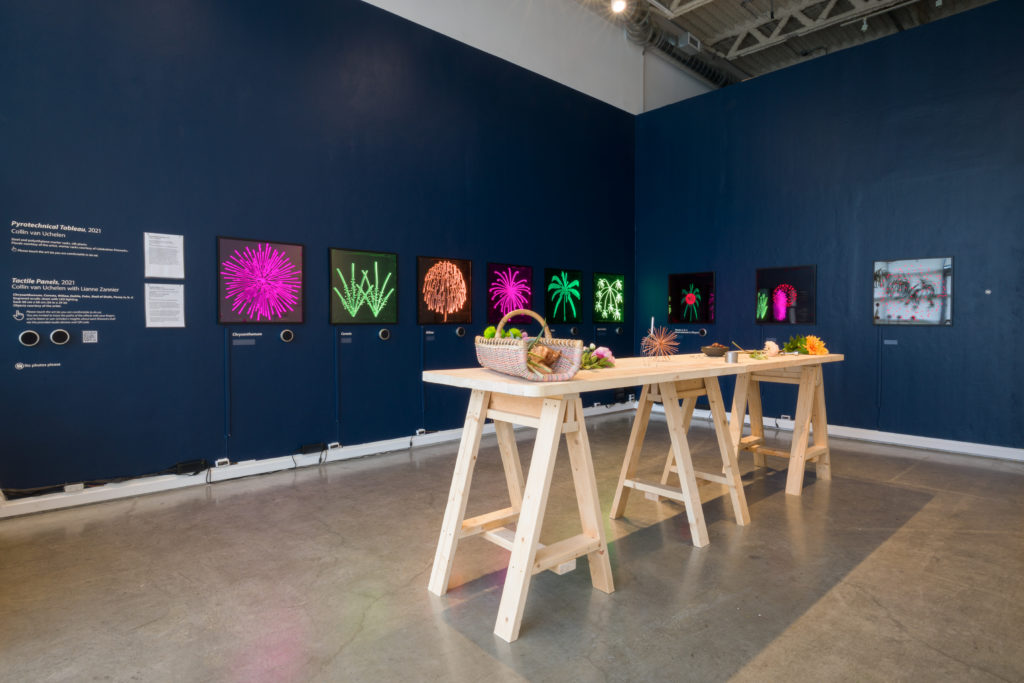In the exhibition Ladykiller the Maneater, Tlingit artist Alison Bremner brings forward the experiences of an imagined deity who has existed in a dream-state for a very long time—so long that no one is certain even of what she was the deity of anymore. The eel in Tlingit culture was considered too “lowly” a creature to eat and therefore largely ignored. But eventually, Ladykiller could not ignore the world of men, and was awoken from her subterranean slumber and emerged to traverse and experience this new world around her.
For Bremner, culture is not stagnant. Through contact and technological revolution, Tlingit culture is constantly adapting, observing and searching for its place in the world, just as any other. Ladykiller the Maneater is both a manifestation of trauma and a means of processing it; Bremner envisions her as loving and gentle in her most natural state but highly carnivorous when agitated. Bremner’s paintings demonstrate both the love and bite of the artist’s humour and her penchant to draw from all aspects of contemporary Indigenous identity without assigning much attention to the discourse of traditional vs contemporary. Bremner’s work is not exotic but lived in, felt and able to weave through the cacophony of abrupt awakenings and disruption.
Alison O. Bremner is a Tlingit artist born and raised in Southeast Alaska. Bremner is believed to be the first Tlingit woman to carve and raise a totem pole. She has studied under master artists David R. Boxley and David A. Boxley in Kingston, Washington. Painting, woodcarving, regalia and digital collage are a few of the mediums the artist employs. In addition to her contemporary art practice, Bremner is committed to the revitalization of the Tlingit language and creating works for traditional and ceremonial use.
Her work is included in the permanent collections of, among others, the Burke Museum, Seattle; Portland Art Museum, Oregon; Château Musée Boulogne-sur-Mer, France; Frye Art Museum, Seattle; and the British Museum in London.
Image: Courtesy of the artist.
This exhibition is curated by Whess Harman.
Digitized Programming:
Publication catalogue:
PDF
A companion catalogue for the exhibition with curatorial text by Whess Harmon.
Visual description available: Plain Text, Audio.
A free printed copy is available in gallery while supplies last.
Artist Talk:
Alison Bremner’s artist talk. Link opens on vimeo with English captions and transcript via google docs.
Summary: Artist talk with Alison on April 19th, 2023, recorded on Zoom.
Creative Access Audio Tour:
Creative Access Audio Tour of the exhibition. Audio currently unavailable.
A visually described tour of Ladykiller the Maneater, written by Keimi Nakashima-Ochoa, with assistance from Kay Slater.
English transcript available: Google Doc, Plain Text, PDF
Site Map and Didactics:
A PDF containing the didactic information and layout of the works in the show. This didactic information is also contained within the audio tour and virtual walkthroughs.
Virtual Walkthrough:
We captured a 360 of the exhibition, but only have the rights to share 5 active shows at a time. Here are stills that were pulled from the 360. If you would like to experience our 360 capture, please contact archives@grunt.ca
- Dollhouse or birdseye view of the exhibition.
- South and East walls of the exhibition
- East wall of the exhibition
- Front Entrance of exhibition
- West wall of the exhibition



